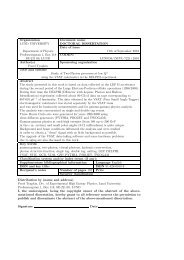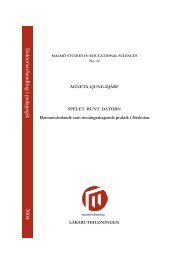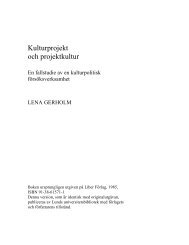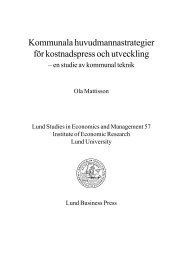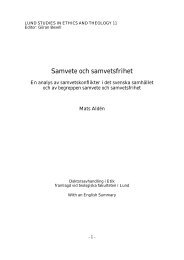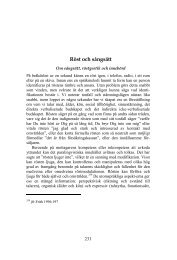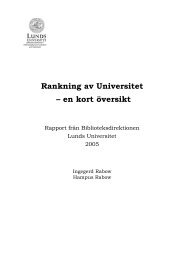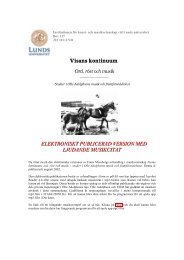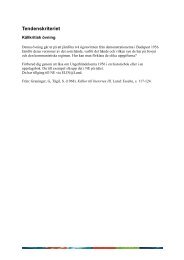Hyperpolarized Nuclei for NMR Imaging and Spectroscopy - Lunds ...
Hyperpolarized Nuclei for NMR Imaging and Spectroscopy - Lunds ...
Hyperpolarized Nuclei for NMR Imaging and Spectroscopy - Lunds ...
You also want an ePaper? Increase the reach of your titles
YUMPU automatically turns print PDFs into web optimized ePapers that Google loves.
2.4.1 T 1 relaxation mechanisms <strong>for</strong> hyperpolarized gases<br />
Several mechanisms contribute to the relaxation rate (1 T 1)<br />
of hyperpolarized<br />
noble gases in vitro (e.g., in a transport container) <strong>and</strong> in vivo, including<br />
surface relaxation, oxygen-induced relaxation, gradient-induced relaxation,<br />
<strong>and</strong> dipolar relaxation.<br />
The surface relaxation mechanisms of 3 He <strong>and</strong> 129 Xe are complex<br />
(Fitzsimmons et al. 1969, Driehuys et al. 1995), but can be outlined as<br />
12<br />
1 1 S<br />
=<br />
T η V<br />
1,<br />
surface<br />
where SV is the surface-to-volume ratio of the gas container <strong>and</strong> η is a coefficient<br />
dependent on the surface material, the temperature, <strong>and</strong> the magnetic<br />
field strength. In iron-free glass cells, the T 1 of hyperpolarized 3 He can<br />
be ∼100 h, <strong>and</strong> several 100 h with additional coating of cesium or rubidium<br />
(Heil et al. 1995, Wolf 2000, Gentile et al. 2001). In Pyrex cells coated with<br />
sol-gel, T 1 as long as 340 h has been measured (Hsu et al. 2000). In the porcine<br />
lung, the T 1,surface <strong>for</strong> 3 He has been measured to be > 4 h, corresponding<br />
to a value of η of > 22 h cm –1 (Deninger et al. 1999), which is better than<br />
many uncoated <strong>and</strong> coated glass surfaces. For 129 Xe, a T 1 value of 3 h has<br />
been reported <strong>for</strong> gas contained in a 7.5 cm diameter quartz cell (Chann et<br />
al. 2002), corresponding to η ≈ 3.8 h cm –1 .<br />
Paramagnetic molecular oxygen is a very potent source of relaxation. The<br />
oxygen-induced relaxation rate has been empirically determined <strong>for</strong> 129 Xe<br />
(Jameson et al. 1988) <strong>and</strong> 3 He (Saam et al. 1995) according to<br />
1<br />
T<br />
1,<br />
O2<br />
1<br />
T<br />
1,<br />
O2<br />
003 .<br />
O −1<br />
129<br />
p 2 273 ⎛ 300⎞<br />
= 0. 388 ⎜ ⎟<br />
1. 013 T ⎝ T ⎠<br />
042 .<br />
O −1<br />
3<br />
p 2 273 ⎛ 299⎞<br />
= 045 .<br />
⎜ ⎟<br />
1. 013 T ⎝ T ⎠<br />
s ( Xe)<br />
s ( He)<br />
[9]<br />
[10]<br />
where T is the temperature [K] <strong>and</strong> p O2 is the oxygen partial pressure [bar].<br />
Eq. [10] is valid in the temperature range from 200 K to 400 K. At room<br />
temperature (293 K), the relaxation rates can thus be expressed as



